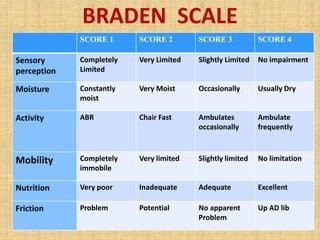A nurse is teaching a client about preventing osteoporosis. Which of the following statements by the client indicates a need for further teaching?
"I will reduce my intake of sodium."
"I will limit my intake of soft drinks."
"I will decrease my intake of caffeine."
"I will reduce my intake of vitamin K-rich foods."
The Correct Answer is D
A. "I will reduce my intake of sodium." - This statement is correct. High sodium intake can lead to increased calcium excretion through the urine, which can weaken bones. Reducing sodium intake can help prevent osteoporosis.
B. "I will limit my intake of soft drinks." - This statement is correct. Soft drinks, especially cola beverages, contain phosphoric acid, which can leach calcium from bones, leading to decreased bone density. Limiting soft drink consumption is advisable for bone health.
C. "I will decrease my intake of caffeine." - This statement is correct. Excessive caffeine consumption can interfere with calcium absorption and increase calcium excretion. It is advisable to limit caffeine intake to prevent osteoporosis.
D. "I will reduce my intake of vitamin K-rich foods." - This statement is incorrect. Vitamin K is essential for bone health as it helps in bone mineralization and reduces the risk of fractures. Foods rich in vitamin K, such as leafy green vegetables, are beneficial for bone health and should not be reduced unless there are specific medical reasons to do so.
Nursing Test Bank
Naxlex Comprehensive Predictor Exams
Related Questions
Correct Answer is ["200"]
Explanation
To calculate the rate at which the nurse should program the pump in milliliters per hour, you can use the following formula:
Rate (mL/hour) = Volume (mL) / Time (hours)
In this case, the volume is 1,000 mL (1 liter), and the time is 5 hours. Plugging these values into the formula:
Rate (mL/hour) = 1,000 mL / 5 hours = 200 mL/hour
So, the nurse should program the pump to administer the normal saline at a rate of 200 milliliters per hour.
Correct Answer is B
Explanation
A. Morse Scale:
The Morse Scale, also known as the Morse Fall Scale, is used to assess a patient's risk of falling. It evaluates various factors such as history of falling, secondary diagnosis, ambulatory aids, IV therapy, gait, and mental status. It is primarily focused on assessing the risk of falls, not pressure ulcers.
B. Braden Scale:
As previously mentioned, the Braden Scale assesses a patient's risk for developing pressure ulcers. It takes into account sensory perception, moisture, activity, mobility, nutrition, and friction/shear. The scale helps healthcare providers determine the level of risk a patient has for developing pressure sores and guides interventions to prevent them.
C. Bristol Scale:
The Bristol Stool Scale is used to classify the form of human feces into seven categories. It is a medical aid designed to classify the form of human feces into seven categories. This scale is primarily used to assess bowel movements and is unrelated to pressure ulcers.
D. Hendrich II Scale:
The Hendrich II Fall Risk Model is a tool designed to identify patients at risk for falls. It includes factors such as confusion, symptomatic depression, altered elimination, dizziness, male gender, and the use of antiepileptics, benzodiazepines, or non-opioid analgesics. Similar to the Morse Scale, it focuses on assessing the risk of falls, not pressure ulcers.

Whether you are a student looking to ace your exams or a practicing nurse seeking to enhance your expertise , our nursing education contents will empower you with the confidence and competence to make a difference in the lives of patients and become a respected leader in the healthcare field.
Visit Naxlex, invest in your future and unlock endless possibilities with our unparalleled nursing education contents today
Report Wrong Answer on the Current Question
Do you disagree with the answer? If yes, what is your expected answer? Explain.
Kindly be descriptive with the issue you are facing.
